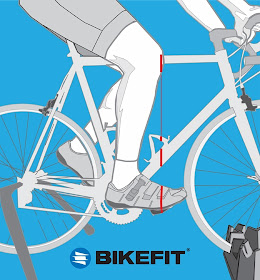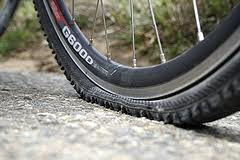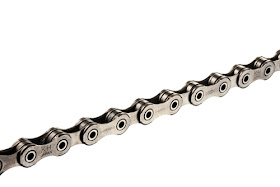Do You Need A Fitting?
Here are the Top 5 Reasons You Should at Least Check
Riding with high comfort and efficiency requires a properly fitted bike. There is a lot of misinformation floating about, saying that none of your weight should be on your arms, or that saddle height doesn't matter, or the handlebars should be as high as the seat, but this information comes from well-researched books and studies by experts.
TOP 5 REASONS TO GET A FITTING
1. Riding your bike shouldn't hurt.

If it hurt for you to walk or run, you would see a Physical Therapist to find out why. Why should riding a bike be any different? If riding your bike hurts, you need precision adjustments to your position and equipment to stop the pain and keep you on your bike.
2. Prevent Repetitive Motion Injury
Biking is repetitive in nature. During a bike fit, alignment and position are optimized, which greatly enhances your riding enjoyment
3. Be More Effective
The goal in a fitting is to mate the bike with your body to help you enjoy riding comfortably and efficiently. A fitting will help you put more power to the pedals and stay balanced easier when riding.
4. Enhance Safety and Handling
If you aren't in the right position when riding, it can make it extremely difficult to reach your shifters or brake hoods, your water bottle, or your pedals. By sitting correctly on the bike, you can easily reach and maneuver all these necessary parts of your bike.
5. Improve Overall Endurance and Efficiency
The bike position is not inherently natural. Your muscles have to learn how to be efficient on the bike. When your bike fit is dialed in, your body is happier. A fit can optimize your muscular ergonomics and train neuromuscular skill of cycling biomechanics.
Everyone is different, and these recommendations only represent the norms, these are the best estimates from experts who have done experiments involving hundreds of people (and assembled by http://www.bicyclesource.com/bike/fitting). The information listed here is not intended for you to be your own fit specialist, but to give you an idea of what goes into the process.
Crank Length:

The right crank length, boils down to body size and rider style. Longer cranks have more leverage and can push large gears at a low cadence in climbing and time trialing. Riders who sprint or have a high cadence will do better with standard crank sizes. For general road racing and touring, frames smaller than 21" (54 cm) will want a 170mm crank. 21.5"-24" (55 to 51cm) will probably want cranks of 170 to 172.5mm. Those with frames over 24.5" (typically over 6'2") tend to want cranks of 172.5 to 175mm.
Cleat Adjustment:
If the ball of your foot is not over the pedal spindle, or the leg is forced into an unnatural twist, you not only compromise performance, but also risk knee injury! Here is how you adjust your cleats:
1. Grease the clean bolts and tighten moderately
2. Mount the bike, click (or strap) in
3. Adjust the position so that the ball of your foot is either directly above or slightly behind the pedal axle.
Keep in mind that cleats positioned too far forward on the shoe will generate excessive ankle movement, and can cause an Achilles strain.
Continue to make small adjustments on your pedals until you have found the spot that feels just right
Saddle Tilt:
Sometimes cyclists tilt their saddles very slightly upwards, which helps the rider put more weight on the saddle and less on the arms. Sometimes cyclist tilt their saddles downward which causes the rider to constantly slide forward or brace themselves with their arms as long as they're in the saddle. Forward-tilted saddles do not add to comfort, so set it to dead level.
Saddle Height & Position:

Perhaps one of the most important aspects of getting your fitting is the positioning of your saddle. It's important that you are not sitting too tall on the bike, as this will cause over extension in the knee. If you are sitting too low on the bike, you will lose a ton of power at the pedals and your ride will feel much more laborious.
Moving your saddle back puts you in a lower posture, which is more aerodynamically efficient, allows you to use all of your leg muscles, and is better for your back and breathing. The farther forward you are, the more total power output you have available, and farther back allows you to "ankle" more effectively and is conducive to long-haul output.
While you may be able to find the perfect saddle position on your own, it is much better to receive a professional fitting to find that "sweet spot" for the best combination of comfort and efficiency.
Handlebars:
While it is normal to have some of your weight resting on your arms, you need to be sure that the majority of your weight isn't resting there. Straight bars (on hybrid bikes), often nearly as high or higher than seat can limit your riding so severely that it hardly matters where you put your weight.
On the better designed mountain bikes, you note that the handlebars are very much lower than the seat, and are far enough forward to promote optimal 45 degree back posture.
Lowering your bars gives you more power, as jerking on your bars as you pedal will add to the torque generated, without the unwanted side effect of pulling the front wheel off the ground. The lower, more distant handlebars also let you move your saddle forward with respect to the pedals, which puts it in a sprinty position.
Handlebar position:
Handlebar position is generally set by the nose being directly above the handlebars when down on the hooks. The second rule of thumb is when riding in your normal position, your front hub should appear hidden by or a bit behind your handlebars. Alternately, sit on the bike in your normal riding position while someone holds it steady. Without changing your position, remove one hand from the bars and let it relax and dangle freely. WIthout stretching, rotate your arm in a large arc. As it comes back to the bar, if it comes ahead or behind your other hand, your handlebars need to be moved.

The rotation of your bars is determined solely by what is comfortable, not the bar's alignment with the earth's surface. Rotate your bars upward until you achieve a more neutral wrist position. Let comfort be your guide to fine tune this as your body will guide you to the best position. This simple adjustment will help improve hand comfort and reduce numbness.
(A)Symmetrical legs:
For almost everyone, you'll find that one leg is longer than the other. If the difference is as slight as a half centimeter, you probably needn't worry, but at some point you'll want to make your bike fit.

If the difference is mostly in your thighs, you'll want to compensate your crank length. IF your lower legs are different, the pedal cage height is the measurement to change. Shimano makes drop-center pedals, which can be fitted to some cranksets
. The shorter leg uses a conventional pedal, possibly using an adapter in the crankset. Another option is to use orthopedic pedals set to different cage heights.
Bike Frame Sizing:
Primarily regarding road bikes (but we'll make notes about mountain bikes when appropriate, think of the bike frame along two dimensions: vertical and horizontal. The best frame size for a cyclist is as small vertically as possible, with enough length horizontally to allow a stretched out, relaxed upper body. This frame will be lighter and stiffer than a larger one and will handle better and be more comfortable than a smaller frame.
Frame size is measures from the seat lug at the top of the center of the bottom bracket. To calculate your correct frame size, divide your height by three, or subtract 9 inches from your inseam length (measured from crotch to floor in bare feet)
Regardless of the calculations, the frame should be easily straddled with both feet flat, perhaps with an inch of clearance. While a smaller frame can be compensated with a higher seat and headset (of course), a frame which is too large for adequate groin clearance should be avoided at all costs. If you can adjust the seat and bars properly with two different sized frames, the smaller one will be stiffer and absorb less of your pedaling power through flexing. As men have proportionately shorter legs than women, your frame and seat will usually be higher than a man of the same height.
For a mountain bike, we start by recommending a frame in the rance of 10-12 cm. smaller than you take in a road frame.
In many ways, though, it is more important to fit a mountain frame by the top tube length needed, rather than by the seat tube length. For instance, you might be able to get to the proper frame clearance, saddle height and neutral knee position on either a 17" or 19" frame. Yet the 19" frame will likely have a top tube that is 1" longer than the 17" frame, which changes your stem length accordingly. Or, one manufacturers 17" frame may give you a 22" top tube, while the next one's 17" gives you a 22.8"
If you are serious enough to wear clip in pedals, you may want to consider getting a professional fitting. Riding your bike should be something you do to escape the daily grind, or, for many of you, training for your next race. You may not be training for a specific goal, but who doesn't want to be more comfortable and efficient on their bike?
Keep in mind if you are getting a bike fit on your own bike, and you are not looking for a new bike, it is OK to make sure the bike fit is done on your bike. It isn't mandatory that you start your fit on another bike or sizing type bike to then transfer everything back to your bike.
If you find your comfort on the bike changes after you've left the fitting session, you need to go back to the fitter and let them know. An issue can still creep up down the metaphorical or literal road. But, if you are experiencing pain or discomfort let the fitter know right away. Getting to the fitter quickly helps ensure that they refit you for little or no cost, and helps the fitter as your fit will be fresher in their memory.
Summary:
This overview is not intended to take the place of an actual bike fit done by a bicycle fitting specialist. While using this guidance will help you fit yourself nothing beats a good bike fit from a well-trained and experienced fitter. If you want to get a bike fit hopefully this overview will help you better determine the right person for the job by enabling you to ask better quesitons.








































